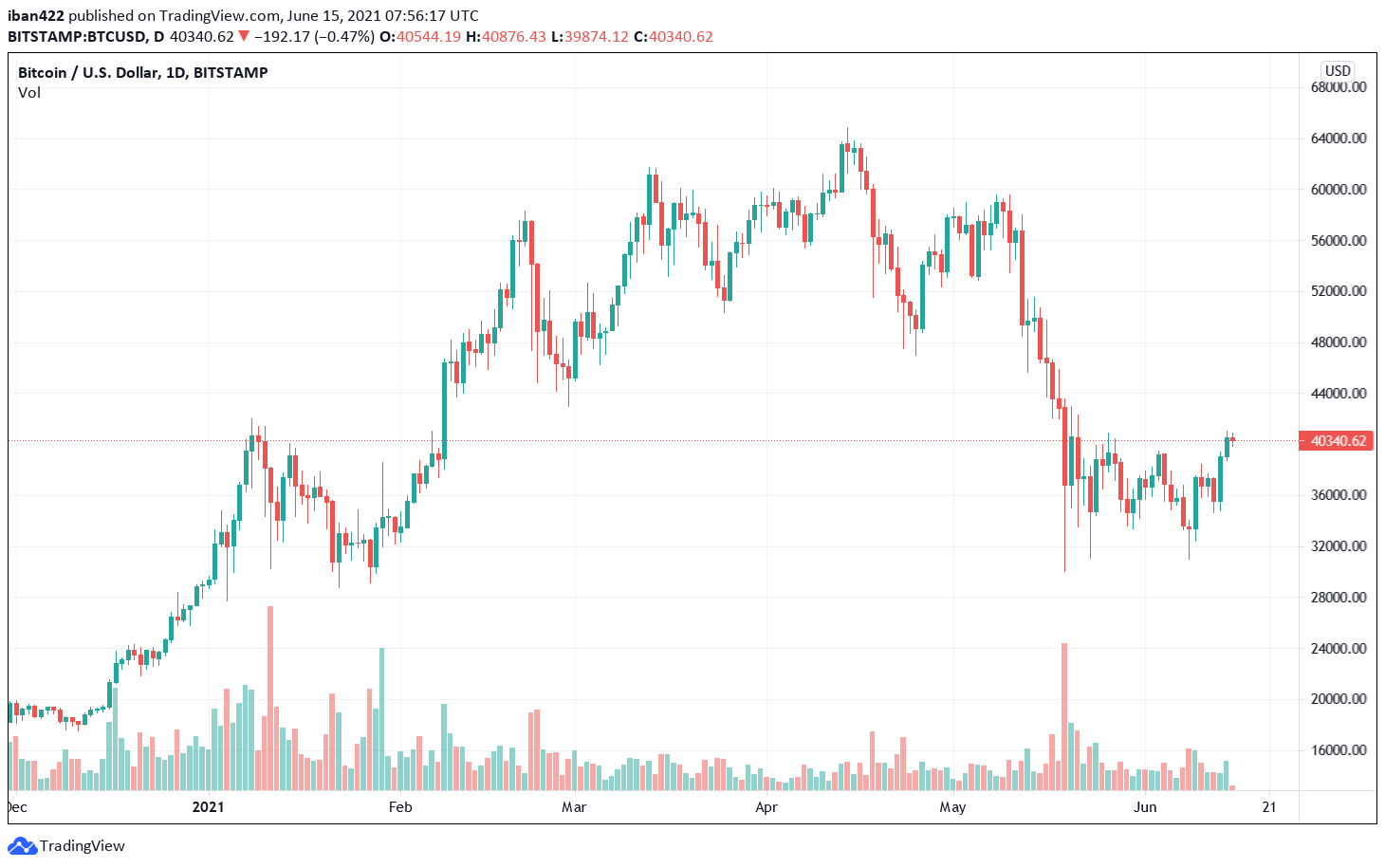- June 15, 2021
- Posted by: admin
- Category: BitCoin, Blockchain, Cryptocurrency, Investments
On Sunday, Tesla’s CEO Elon Musk tweeted that when there’s “confirmation of reasonable (~50%) clean energy usage by miners with positive future trend, Tesla will resume allowing Bitcoin transactions.”
Elon Musk And The Green Energy Debate
These days, Elon Musk and a slew of other billionaires have a lot to say, and it appears that Musk can influence the price of Bitcoin with a single tweet. It was certainly the case when Tesla first accepted bitcoin (BTC) as payment for electric vehicle purchases.
After that announcement, BTC’s price jumped by $10K seeing one of the largest daily candles in its lifetime. Then when Musk tweeted that bitcoin wouldn’t be accepted and Tesla cited environmental concerns, the price dropped significantly. Sunday’s tweet boosted BTC prices by 9% and the price has inched past the psychological $40K region.
This is inaccurate. Tesla only sold ~10% of holdings to confirm BTC could be liquidated easily without moving market.
When there’s confirmation of reasonable (~50%) clean energy usage by miners with positive future trend, Tesla will resume allowing Bitcoin transactions.
— Elon Musk (@elonmusk) June 13, 2021
Despite his good intentions, it’s difficult to predict how Musk will achieve his goal of determining whether the bitcoin mining ecosystem uses 50% clean energy. According to some studies, the goal may have already been achieved, as researchers have been looking into the number of miners who use renewables for quite some time.
Musk might want to study Coinshares’ analysis from June 2019, which shows that renewable energy sources power 74.1 percent of the bitcoin mining industry. Additionally, Coinshares issued a survey on the same subject the year before, finding that renewable energy-dependent miners accounted for about 77.8% of all miners.
No Definite Data
Global asset manager Ark Invest Management explained in mid-May that concerns over the Bitcoin network’s energy consumption are “misguided.” Even John Lennon’s son detailed that Bitcoin’s use of energy was a silly argument compared to the carbon footprint that’s tied to consumerism
Well, it seems most critiques have been leveraging data derived from Cambridge Bitcoin Electricity Consumption Index (CBECI) and the index provided by digiconomist.net. Both metrics show large discrepancies (between each site) to this very day and in December 2020, Bitcoin.com News was told at the time the “CBECI map hasn’t been updated for some time now.” These discrepancies and the notation that data wasn’t (at least in December 2020) being updated regularly, could be problematic for analysts.
The CBECI representative brought this inconsistency to light in the first place because the website claimed that China accounted for 65% of the hashrate. This statistic was challenged in July 2020, when Bitooda research revealed that China accounted for only 50% of global hashrate.
Despite the rising hashrate in North America and the purchase of thousands of mining rigs by Western countries over the last six months, CBECI data shows that China still holds 65.08 percent of the BTC hashrate on June 14, 2021. According to pool statistics, Foundry USA has been capturing a lot of hashrate recently, capturing 4.3 percent of global hashrate on Monday.
Bitcoin Mining Council May Open Leeway
Meanwhile, Microstrategy CEO Michael Saylor has been tweeting about the Bitcoin Mining Council, announcing that the organization will meet this week on Wednesday. Despite the noble intentions behind this concept, many people are in doubt and question whether it even matters.
“On Wednesday, you are all invited to meet with members of the Bitcoin Mining Council to discuss the latest on bitcoin Mining, the energy debate, network dynamics, China mining policy, North American mining developments, tech trends & industry outlook,” Saylor tweeted.
North America may account for 10% to 15% of global hashrate, but that is insignificant when compared to the vast majority of miners worldwide. However, the newest crackdown news from Beijing may force the worldwide mining industry to switch to renewable energy anyhow.

Related article | Bitcoin Surges Close To $40,000 After Elon Musk’s Meeting With Miners
Featured image from Pixabay, Charts from TradingView.com